Identify and Attract a Summer Tanager
Updated: Jul. 12, 2024
Seeing—or hearing—a summer tanager is a red-letter day. Summer tanagers may be bright red—but that doesn’t always make them easy to spot.
On This Page
What Does a Summer Tanager Look Like?
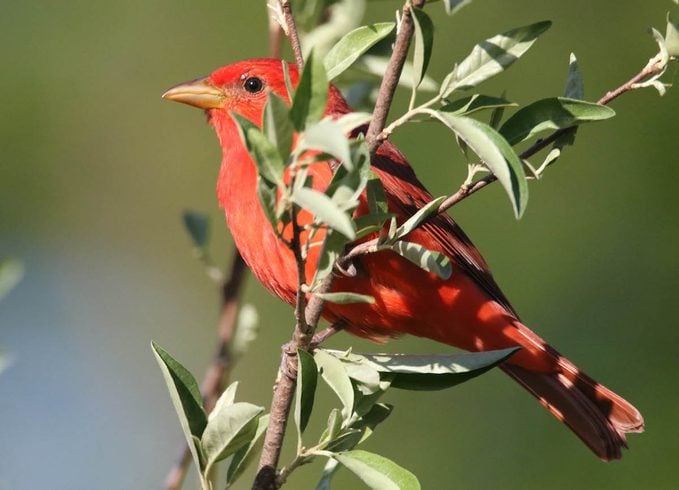
Male summer tanagers are unmistakable. They’re the only entirely red birds found in the United States and Canada. You’d think that it would make them stand out in green treetops, but they can be surprisingly difficult to spot. Unlike a scarlet tanager that is red only in spring and summer, a male summer tanager keeps his bright colors in all seasons.
Tanagers also have a distinctive bill shape. Moderately thick, it’s ideal for feeding on large insects and small fruits. Roughly the size of red-winged blackbirds, summer tanagers in the western part of their range are 15% larger than the birds in the east.
Female Summer Tanager
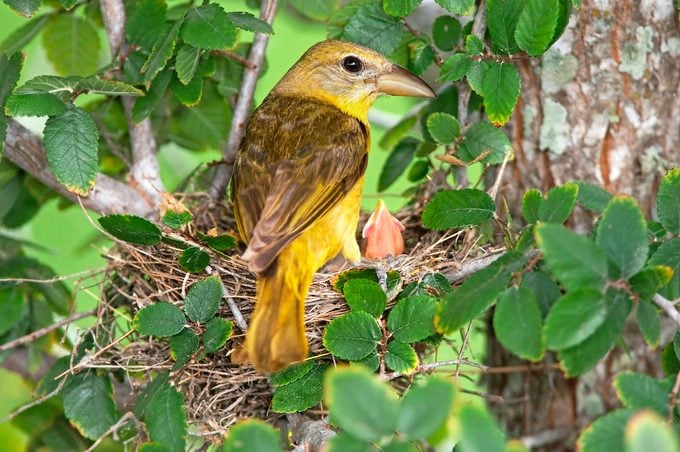
Unlike the bright red males, females are a leafy, greenish yellow color, blending into the trees even more. They can be hard to tell apart from some other tanagers.
Juvenile Summer Tanager
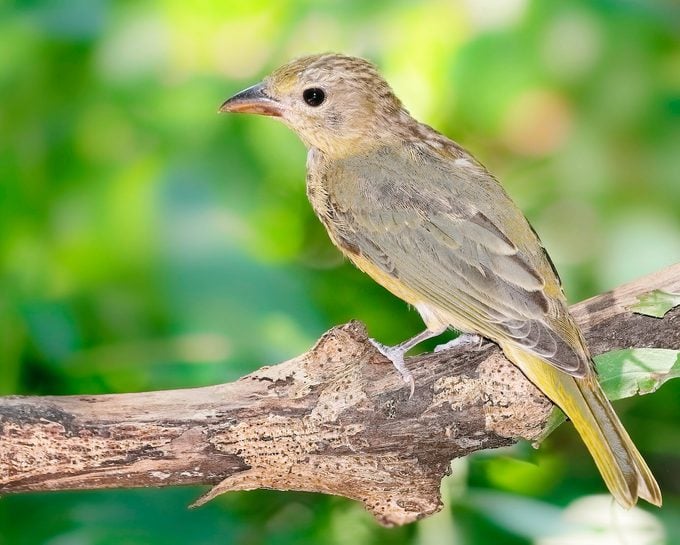
Juvenile summer tanagers aren’t even illustrated in most bird field guide books, because they wear this gray-brown plumage for such a brief time. On the bird above, gray-brown streaks of juvenile plumage are being replaced by the yellow feathers of its first-year immature plumage. In their first fall season, as they migrate to the tropics, young males are completely yellowish like adult females.
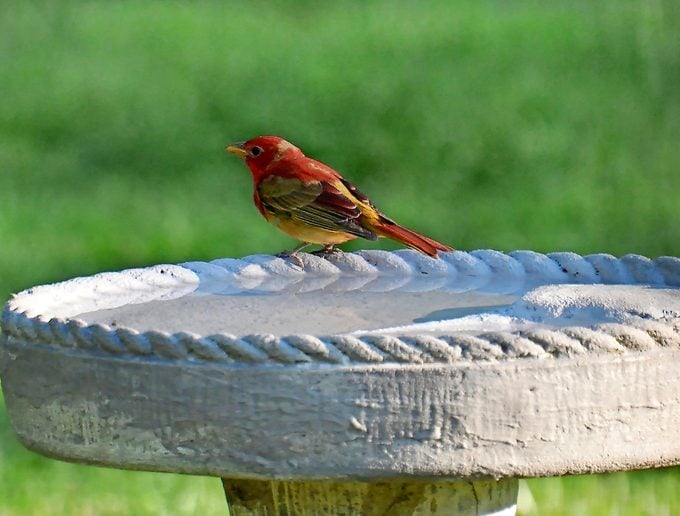
Before they migrate north the next spring, they go through a partial molt, replacing some yellow feathers with red ones. Young male summer tanagers are tricky to identify, thanks to the tie-dye patterns of their feathers. Males about a year old can show blotchy patterns of red and green, or patchy red and yellow, a look that’s stumped many birders. No two birds show the exact same pattern. After their next molt, they have the solid rose-red coloring of the adult male.
Learn how to identify a western tanager.
Summer Tanager Song
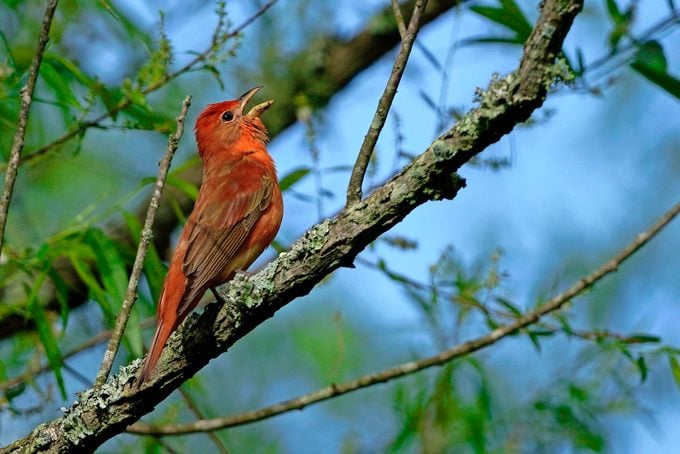
All across the southern United States, from California to the Carolinas, a slow, lazy robin-like song is a clear sign that a summer tanager is present. Even if it isn’t singing, you may hear its characteristic call-note, a snappy pick-i-tuck. This species sounds the same across their range. The pit-tick-cluck call can reveal a tanager concealed in the canopy and is a familiar sound from April through June.
Bird sounds courtesy of the Cornell Lab of Ornithology
Learn about why birds sing in spring.
How to Attract a Summer Tanager
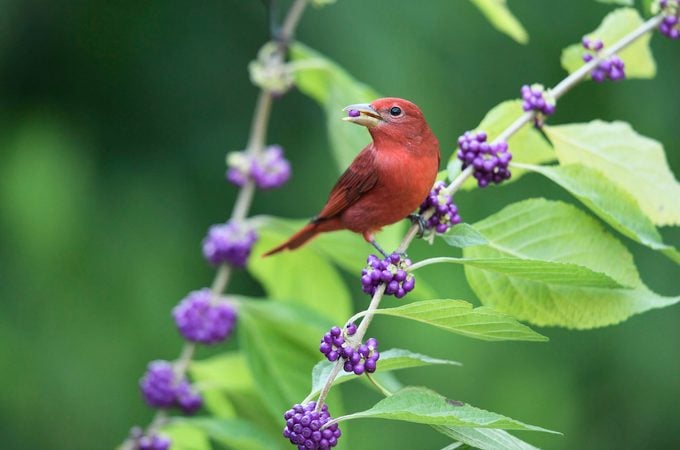
Summer tanagers are clever eaters. A nickname for the summer tanager is “bee bird” because it eats so many wasps and bees. People have observed them catching bees and wasps, flying to a branch, and rubbing the insects against it to remove their stingers before gobbling the bugs. To attract this species, plant native flowers that attract flying insects. These birds also enjoy overripe fruits like bananas and berries and may be drawn to birdbaths or other sources of water.
Summer tanagers aren’t likely to eat from traditional seed feeders, but this species can be enticed with offerings put out for orioles: nectar, oranges and grape jelly. They have also been known to hit the suet blocks, especially during cold snaps, and consider live mealworms a real treat. Beehives are tanager magnets, too. Their summer diet is mainly composed of insects, and they’re sometimes seen plucking bees out of the air.
Summer Tanager Range Map and Habitat

Summer tanagers are an explosion of color and look perfectly at home in the tropics, where they spend the winter. But during the warm season, they are found in their core breeding range, which includes the Southeast and stretches all the way into California, with sightings reported as far north as southern Ontario.
Interestingly, they favor different habitats in different regions. In the Southeast they are common in oak and pine forests, while those in the Southwest concentrate in tall cottonwood trees along lowland rivers. In fall they migrate to tropical wintering grounds that stretch all the way from Mexico to South America. During spring migration, summer tanagers and other North American songbirds have a long flight across the Gulf of Mexico.
For Christopher Joe, who runs Connecting with Birds and Nature Tours on his family’s cattle farm near Newbern, Alabama, the red of the summer tanager is exquisite. He first took note of the bird in spring 2020, when he and his dad saw a male land in a pecan tree in their front yard. Christopher finds summer tanagers most often in habitats “on the edge of pasture woodlands with oaks and some pines.”
Christopher says, “Wildlife plots that include some variety of clover are important as we see tanagers come for their favorite foods of wasps and bees.”
Next, check out 8 types of orioles to look for in North America.
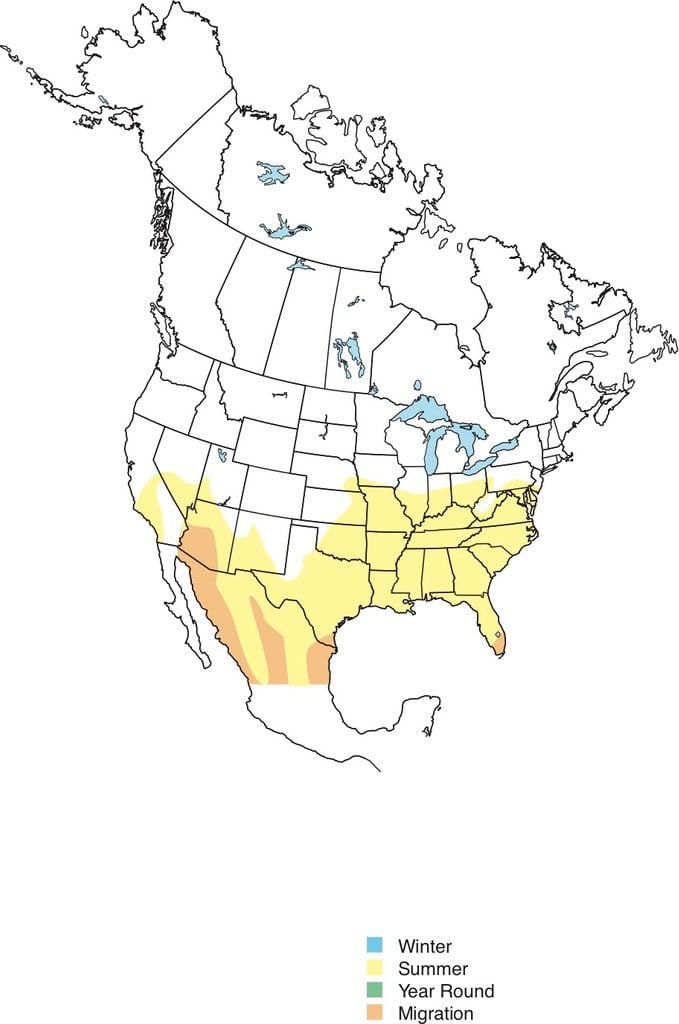
About the Expert
Family farmer, conservationist and birder Christopher Joe operates Connecting with Birds and Nature Tours near Newbern, Alabama. Christopher is a graduate of Alabama A&M University with a bachelor of science degree in agribusiness management.






















